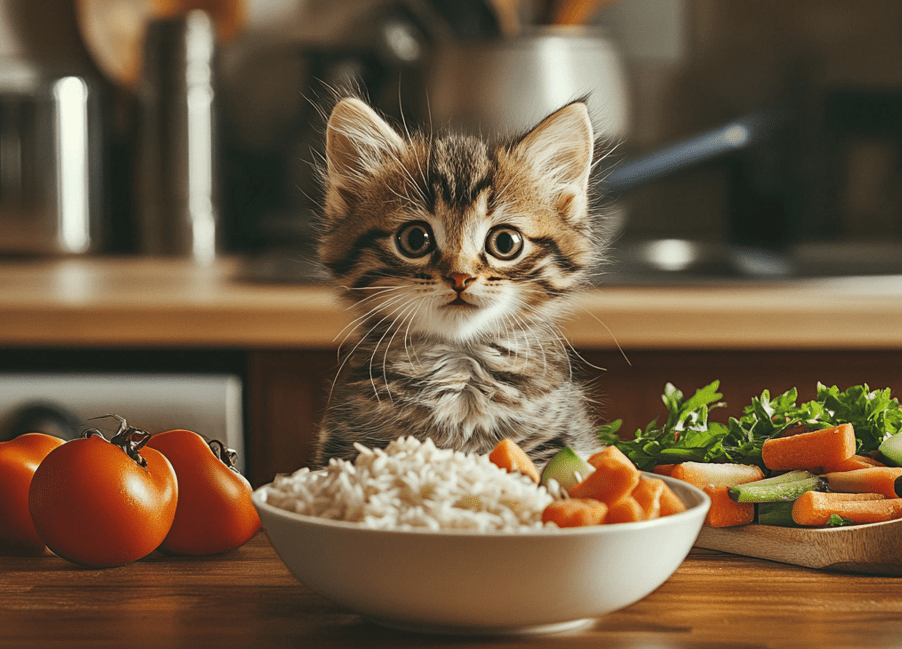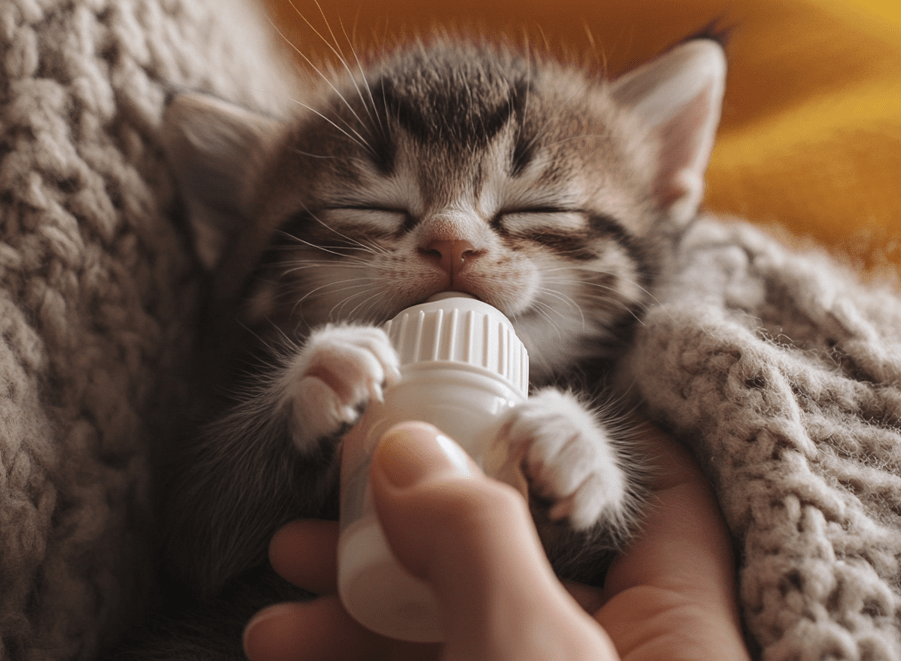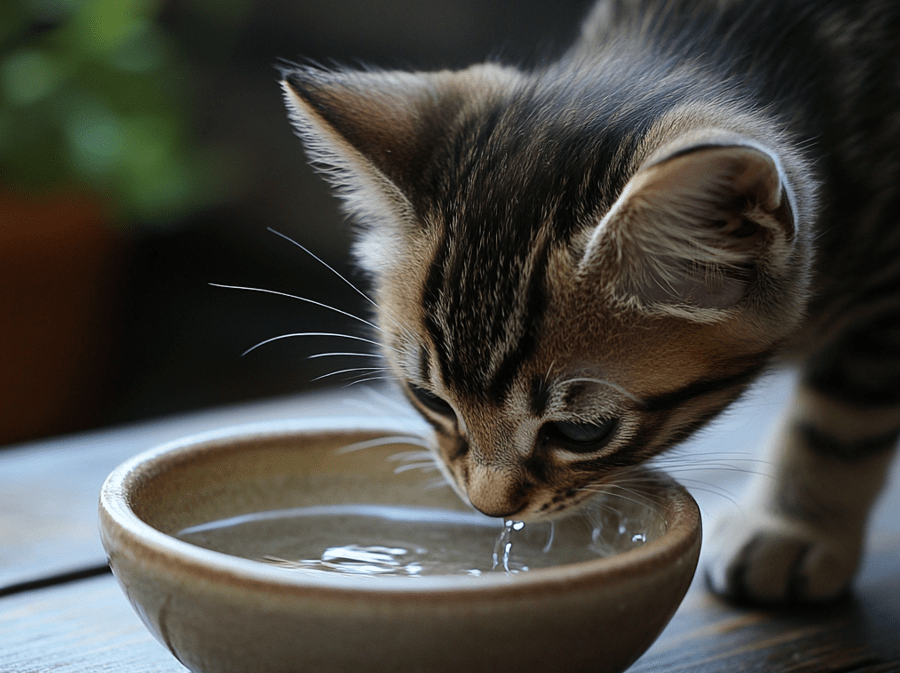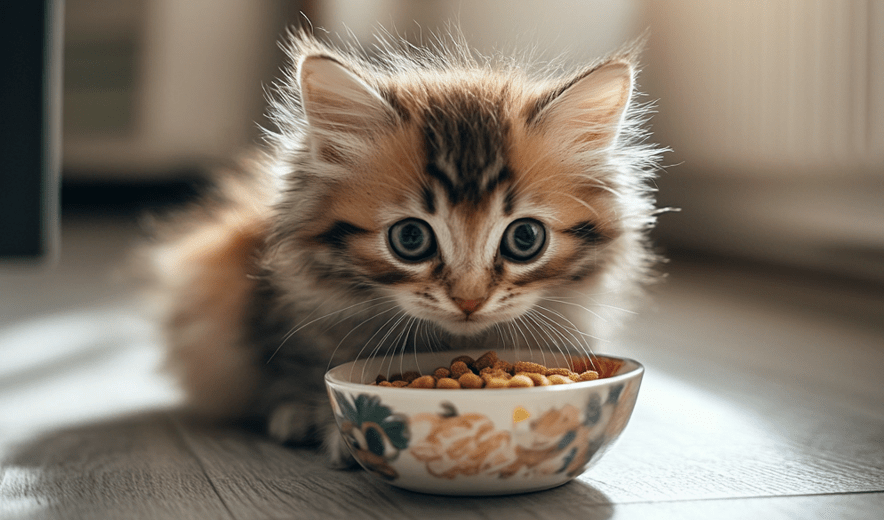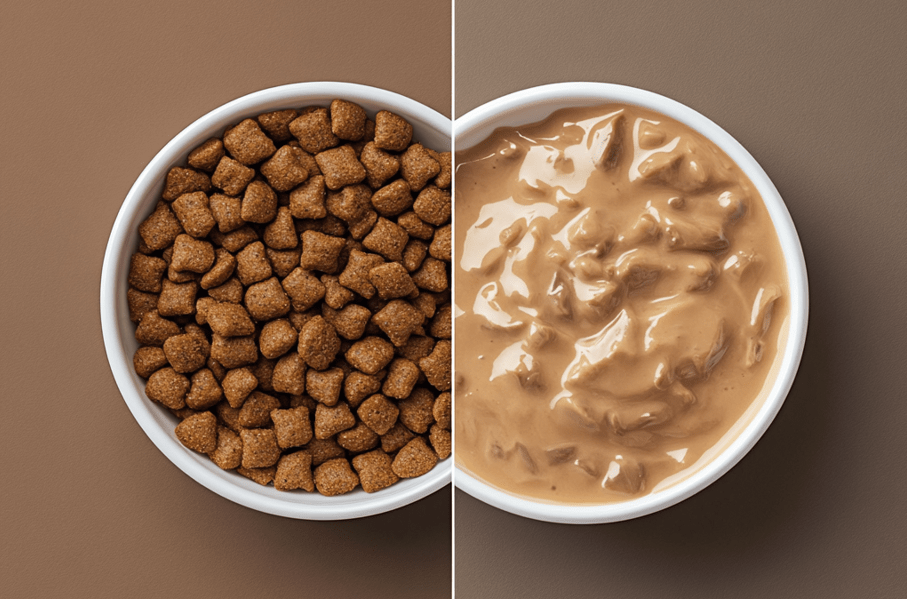
The eternal struggle between wet food and dry food is a common problem among cat owners. Will you go for a textured wet food that simulates the prey most cats would hunt in nature, or stick to dry kibble which is undeniably more practical? Is your greedy cat better suited to wet food for portion control, or would they rather snack on small amounts of dry food as and when they please? In this article we will discuss dry food vs. wet food and all advantages and disadvantages and at the end you will be able to decide should the food be wet or dry or can it be a mixture of wet and dry food.
To watch the summary of this article, just watch this video-
How does dry cat food compare to wet cat food?
The decision to feed your cat wet or dry food may be confusing, but once you understand the most important differences between both types of food, we hope you will find it easier to choose. Moisture and Nutritional Utilization are the most important to be considered.
With up to 80% water content, wet cat food is a great way to ensure that your feline friend is getting enough fluids. This is very important since many cats simply will not drink enough water which may result in dehydration or even urinary tract problems. The high water content in wet food also means it is softer and may be easier to eat, which can be important for elderly cats or cats that have dental problems. Wet cat food is also beneficial in that it often contains more protein than dry food, making it better suited for cats which are obligate carnivores. This is because, in the wild, they would eat almost exclusively meat and wet food comes closest to replicating their natural prey as a whole.
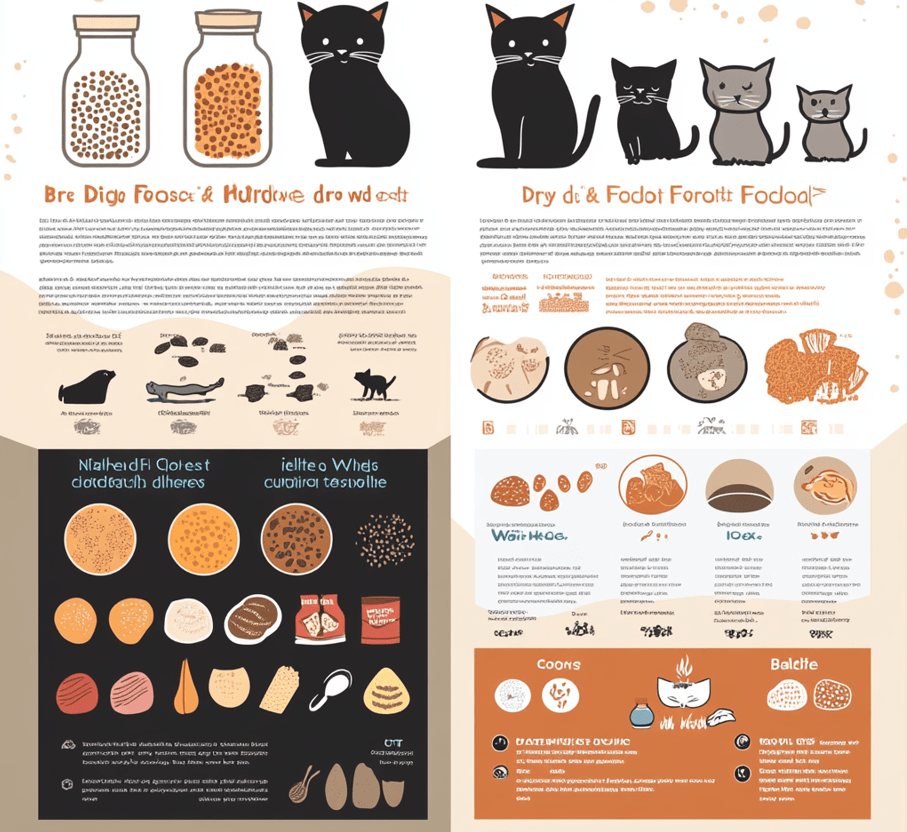
Dry cat food, on the other hand, has its features too. Pros of dry food One major advantage of using a kibble based diet is convenience: it’s easier to store, easy to measure and can be left out for longer periods without going off, making this type ideal for cats that like the odd graze throughout the day. Dry cat food is usually higher in carbohydrates, which are non-essential for cats but are a convenient and energy dense protein source. Some dry cat foods are balanced in nutrition, containing 25% or more of protein and other essential nutrients. A diet that is high in carbohydrate content, so many experts believe that they may trigger health issues such as obesity and diabetes, which is already a common cause of death for cats.
It is also important to take in account the specific needs of your cat when deciding between wet and dry food. On top of this, generally their age or activity level should determine what you would serve up to them. For example, young, healthy cats that are very active might do better with a dry food due to the energy it can provide in constant to older or cats experiencing kidney/urinary troubles and a high vet recommended wet food diet. Also, whether or not you have picky eaters (I do), their preferences can help guide your decision too.
As a recap, both wet and dry cat food have some advantages and disadvantages of their own. Wet food is not the same as kibble, but it can be better for your pet’s hydration and mimic a more natural diet (not ideal) with a higher amount of moisture content compared to dry food. It is important to keep in mind that what your cat eats for a living, including its general health or lifestyle, can all play a role in deciding whether this option of cat food is compatible. Refer to the charts and guides for a more in depth comparison.
Advantages of Dry Cat Food
Dry cat food comes with a number of advantages that actually keep it in high demand among many owners specifically because it prevents the fishiness clothed by wet cat food, and you can simply let your kitty snack at his complete leisure all day.
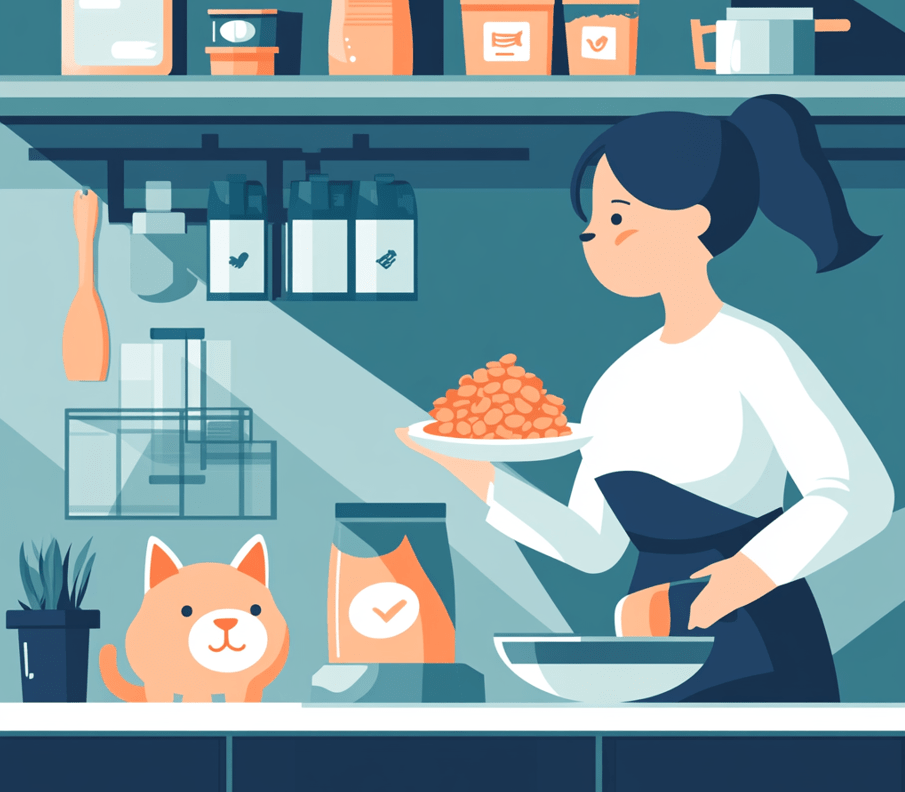
Quick and easy to feed: Dry food comes in handy. You just have to fill the cat’s bowl and hardly ever clean up after it. It is also easy to track if your cat is on a prescription diet.
Room temperature storage: While wet food can be consumed cold, dry cat food must also not be refrigerated and may either sit at room temperature or go straight in the bowl. It can be cold, nothing to warm up!
Good for free-feeding: Dry food can sit in a bowl longer, making it work well for owners who are often out during the day or with cats that are allowed to eat whenever they want. There are also automatic dry pet food feeders.
Possible dental effects: Some dentists say that the hardness of kibble makes it possible to have some tooth-cleaning action, but no study really confirms this possibility, without mentioning the fact that not all areas would be covered.
Extra storage time: Dry food stays fresh for a week or two longer than wet food once you remove it from the bag.
Caloric density for underweight cats: Dry food is significantly higher in carbohydrates so this makes it a calorie-dense option that could be beneficial if your cat needs to gain some weight or if there is a pregnant female, as well.
Affordable: Dry cat food is usually more cost-effective than wet, but prices do differ depending on the brand and if a premium product is purchased.
This makes it a very convenient option for many cat owners, not to mention being more economical too!
Advantages of Wet Cat Food
The benefits of wet cat food are numerous, with its high moisture content being one of the key reasons for supplementing many cats with at least some amount. They generally like wet food, partly because the texture is similar to how they would eat in nature.
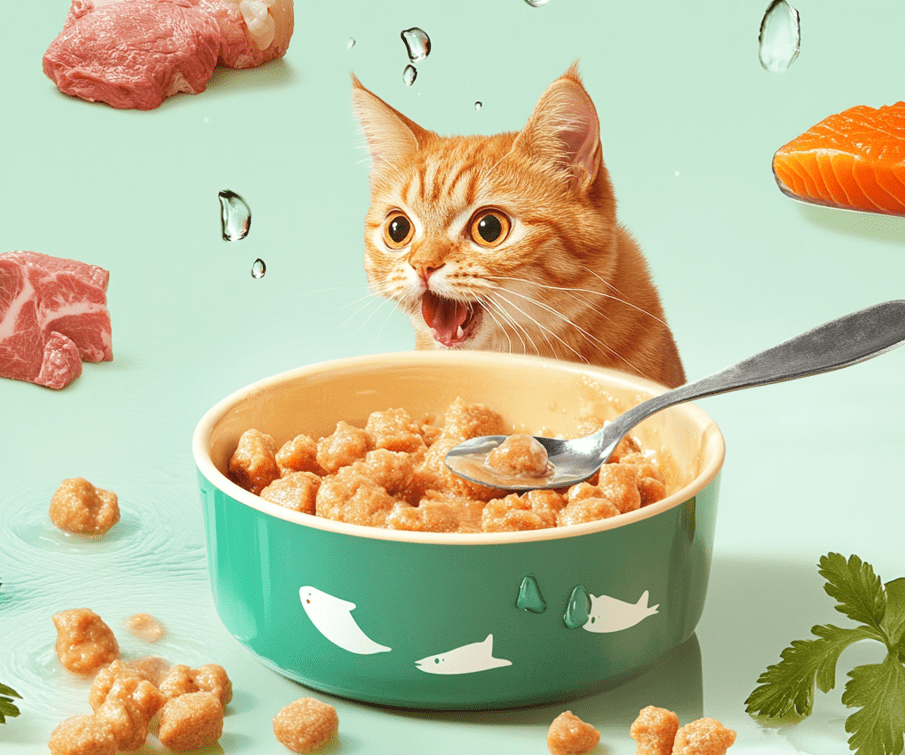
Preferred by cats: Cats are true carnivores, therefore they just love the scent, taste, variety & texture of wet food. It simulates the kind of small prey they could be hunting for in the wild, even though your cats are domesticated.
A good source of protein: Top quality wet cat food sources should have 25% and more animal-based proteins, similar to the dry choices. This protein is important for fueling, as well as some other vital roles in maintaining tissue structure and fur growth, which strengthen the muscles.
High moisture content: As many cats don’t drink enough water, wet food is a great source of hydration. It allows you to avoid constipation and possible urinary or kidney problems.
Single-serving freshness: Wet food is in single servings which provide cats with the experience of eating a freshly opened meal every time. Your baby carrier should have these pouches for convenience and cleanliness.
Ideal for kittens and senior cats: Wet food is especially good for young kittens, which may not have fully developed adult teeth until they are three to four months old, or for senior cats that may have dental issues. Also wet food is easier to digest for kittens and the elderly.
Well for regulated feeding: The mealtime of the day with wet food means that you are able to more easily control portion size which is especially recommended for any. Wet food is an eating experience for them and gives them something to enjoy, so having a bowl of wet food ready before they start meowing might help them associate meal time with the sensation of taste.
Is It Bad to Feed Cats Both Wet and Dry Cat Food?
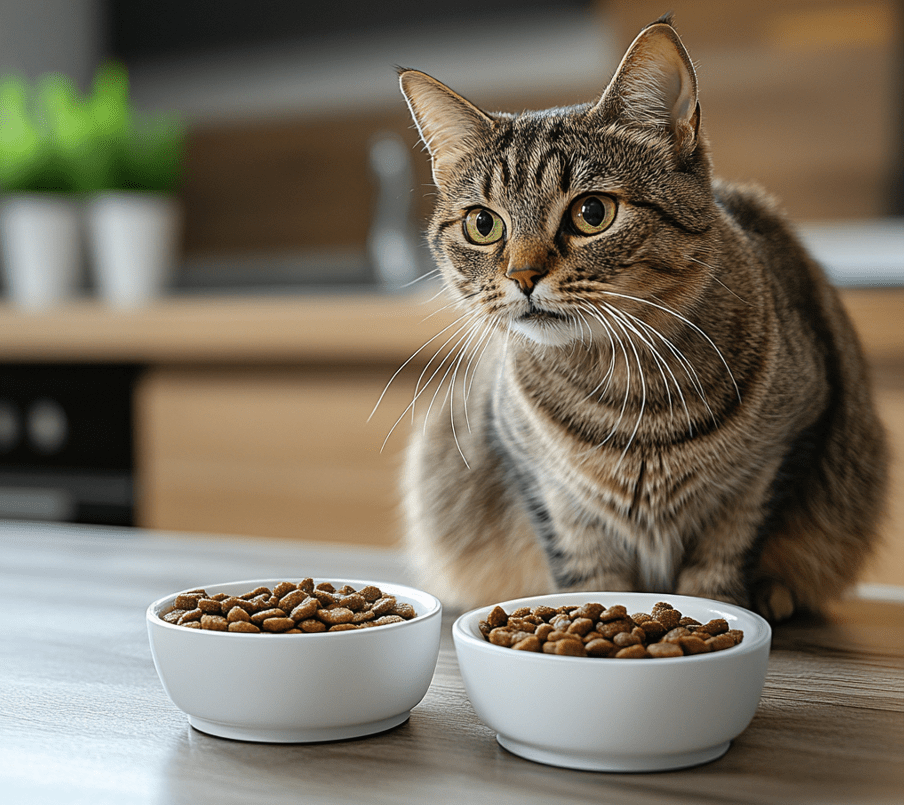
This can be a great way to meet in the middle when it comes to finding the balance between wet cat food and dry cat food for your kitty. You are giving a balanced diet with the hydration of wet food and dry kibble combined; it will keep yourself and your cat happy too. For example, you may feed two meals of wet food a day and leave your cat to eat dry food at his own leisure. But calories need to add up over 24 hours. If you want to know specific portion sizes for your cat based on their own weight range, refer back to our article “How Much Wet Food to Feed Your Cat in a Day!” It works well for the cats that will eat just because it is a habit, regardless of if they are actually hungry or not.
Can Cats Live on Dry Food Only?
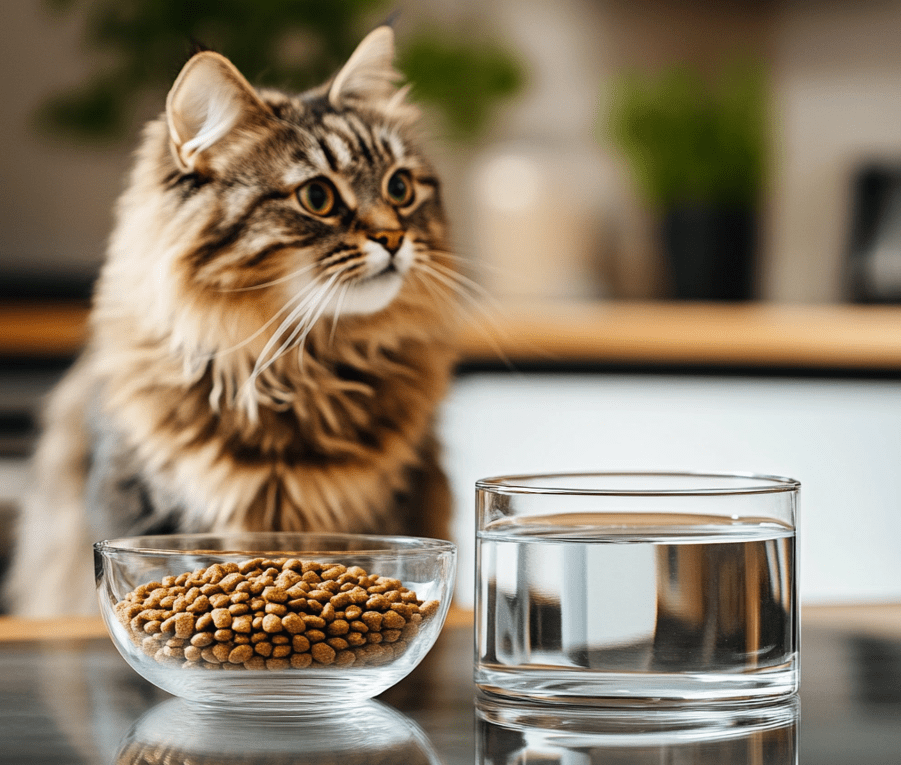
Most experts, however, agree that cats should receive a diet of dry food exclusively from what is advertised as “complete and balanced” cat food as long as it is dry. But dry food only has 10% moisture in it whereas wet food can have up to 80%! That’s why cats consuming dry-only food are more in need of water to avoid dehydration. Check for signs of dehydration like fatigue, sunken eyes and sticky gums.
Read our article about How Many Times Should Kittens Eat a Day to give you an idea on what is the best daily kitten feeding plan for your Kitten.

